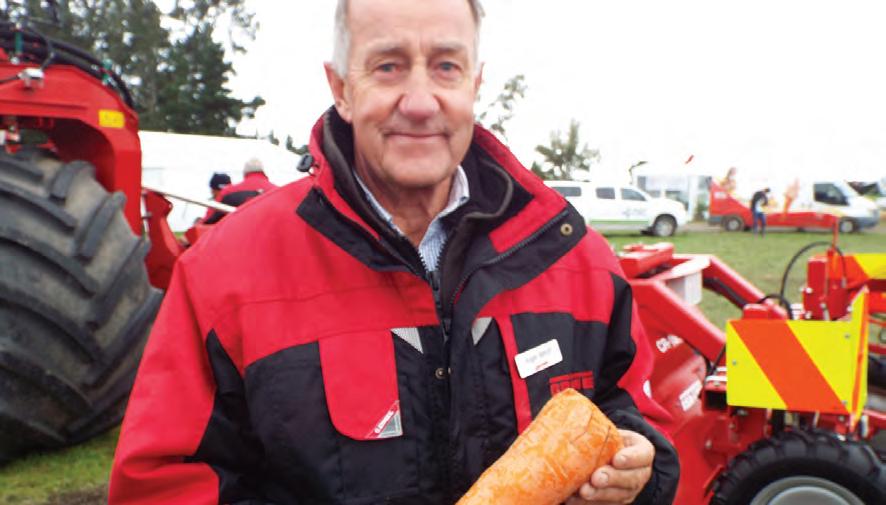HORTNEWS





NEW ZEALAND may only produce 2% of the world avocado crop but the sector is a key part of our horticulture sector.
LAST WEEK’S
10th World Avocado Congress was a great opportunity to showcase New Zealand’s agriculture sector to the world, says NZ Avocado chief executive Jen Scoular. More than 750 overseas delegates enjoyed field day visits to sites across the North Island. The week-long event attracted a record 1100 delegates. Most overseas delegates are involved in other horticulture crops and will be taking back great memories from the week-long event, Scoular says.
Jen Scoular, president of the World Avocado Congress Committee and chief executive of New Zealand Avocado, says last week’s Avocado Congress held in Auckland offered an unprecedented opportunity to promote NZ’s avocado industry to
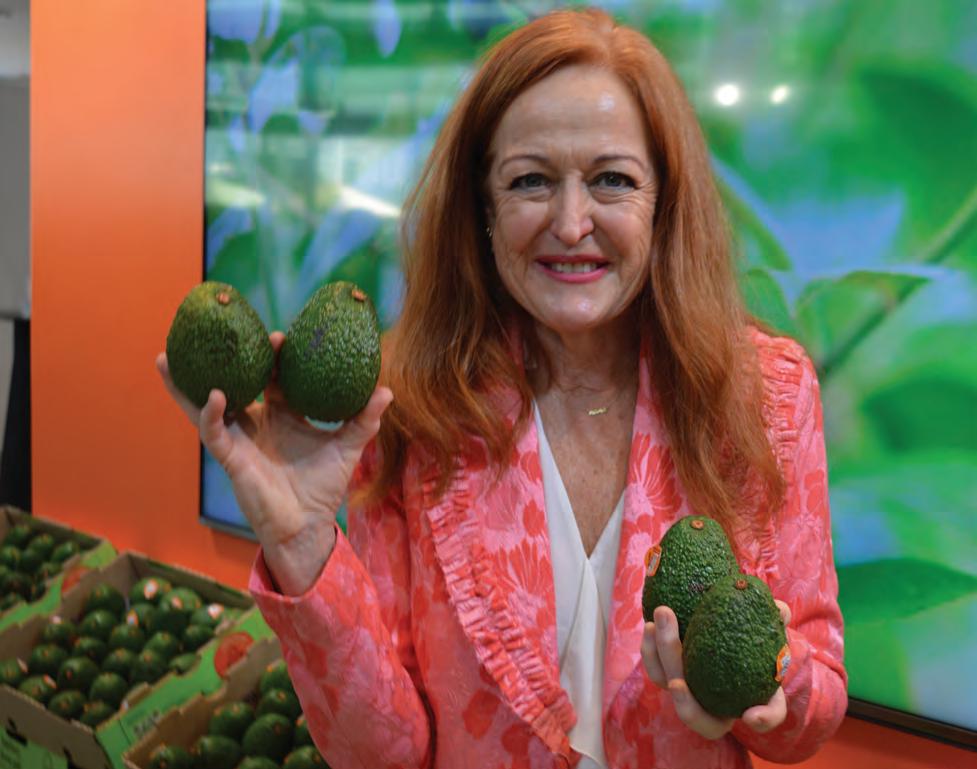
the world.
“Though we only produce about 2% of the global avocado supply and we’re the ninth largest avocado exporter in the world, avocados are NZ’s third largest horticulture export behind kiwifruit and apples,” she told
Hort News. “We play a significant part in the country’s horticulture industry.”

Last week’s congress attracted 1100 delegates, including 750 overseas delegates made up of growers, scientists, researchers,
marketers, retailers, tech innovators, and investors.
Scoular says many were visiting New Zealand for the first time.
Overseas delegates toured eight locations, including sites in Glenbrook, Tapora, Whangarei and the Bay of Plenty to get a taste of NZ avocado and orchards.
Scoular says given the unprecedented weather in NZ, which has raised food security concerns for parts of our primary sectors, the topics explored at the congress were relevant for all Kiwis.
“It was incredibly timely to hear experts talk about the future of food, climate change and the global impacts on horticulture,” she says. “It’s been a tough few years for kiwi growers and the whole industry has faced ongoing challenges with the supply chain and rising costs of production.”

The World Avocado Congress is held every four years, with previous events hosted in Colombia, Peru, Australia and Chile.
The theme for the 2023 Congress was ‘Respectful: respect for people, respect for the environment and respect for our future’.
“Respect for people and land plays a special part in Aotearoa New Zealand’s cultural identity and, as the global avocado industry continues to evolve, respect must be at the heart of this growth,” says Scoular.
The e-Bin was first launched at Fieldays ® 2022 following collaboration between researchers and students co-designing with kiwifruit industry representatives.

This new technology removes the need for harvesters to carry a 25kg bag around all day, opening up orchard roles to a wider demographic of workers while aiming to increase efficiency and reduce fruit damage. The variety of careers in the primary sector is almost endless, find out how to start yours at Fieldays 2023.

WITH UNPREDICTABLE weather patterns and rising costs impacting traditional open-field farming, it’s more important than ever to consider new approaches to sustainable agriculture.
That’s the view of the New Zealand supplier of an Australian automated indoor growing system. The Vertical Farm Systems XA Series is a modular system designed for warehouse installation with plants grown in multilevel trays contained in climate and light-controlled cells.
It is heavily automated with computer-controlled feeding, watering
and lighting, with sensors monitoring temperature, pH and gas levels. Loading, harvesting, recovery of the growing medium and reloading the trays is also automated.
The New Zealand distributor, Landlogic, showed off a small display and test-bench system at the recent South Island Agricultural Field Days, growing rocket.
Landlogic boss Alan Cottington says the XA range is designed for leafy greens – such as loose leaf lettuce, baby spinach, rocket, coriander, parsley and microgreens.
A typical growing cycle is 28 days, or six days for microgreens.
Cottington describes it as basically a
LandLogic is the importer and distributor for New Zealand and the Pacific, as well as sales agent for the rest of the world – except Canada and Scandinavia.
The company is a subsidiary of Ashburton-based agricultural machinery and services company Drummond and Etheridge, whose managing director
Mark Etheridge hopes to have the first commercial Vertical Farm Systems installation up and running before the end of the year.

Mark Etheridge told Hort News his system will consist of a single climate cell of 56 trays.
The building to house it is now under construction near the
hydroponic system, which can also use organic bioponics. He says the system is “just about 100%” automated.
“You literally just have to have somebody there on the computer system clicking a few buttons,” he told Hort News.
A three-cell system currently running in Australia is producing around 600kg of greens a week.
“And it takes less than three hours labour a week to run that farm.”
Cottington says human labour is little more than checking the nutrient levels and topping up nutrient tanks.
“We have an automated packaging machine as well. It’s packing those bags into boxes and distributing them
D&E headquarters.
“This is just a project that I wanted to do, once I retired as CEO of D&Es. So we’ve invested in a single cell which is going to be put up in Ashburton. It’s probably going to produce about 100kg of leafy greens a week.”
“The idea was to have some -
out to clients.”
While it can be used with single use growing media such as peat moss, it’s optimised for clay pebbles, as used in the SIAFD display. Cottington says the pebbles retain a lot of nutrients as well as 2 million beneficial live microbes in each pebble.
The clay pebbles can be reused for 12 months.
“We have a patented additive that goes in there that allows us to actually reuse it.”
Because the pebbles are reused it avoids having to bring fresh soil or other media into the farm with the risk of introducing pests and disease. The pebbles also make for easy automation
thing not only for us to produce, but also to have something that people can go and have a look at, and to demonstrate what can be done, and hopefully sell some units,” says Etheridge.
“November is when we should be pushing produce out.”
Meanwhile, Queenslandbased Vertical Farm Systems
because the machinery automatically empties each tray, separates the crop from the pebbles, washes the tray then refills and replants it.
Cottington reckons the system on display at SIAFD will allow growers to test plant varieties and tweak the settings before going full-size. He knows of only two similar systems already operating in New Zealand, but without Vertical Farm Systems’ level of automation. The enclosed “cells” also give far easier and more efficient climate and lighting control, compared with any open warehouse system.
“The technology for New Zealand is very, very new,” he told Hort News.
also produces its XF system, optimised to produce animal fodder. It effectively converts 1kg of barley grain into 7kg of highly digestible fodder, which can be fed to animals as a mat, roots and all.
The system runs on a six-day cycle with systems capable of either one or two tonnes a day.
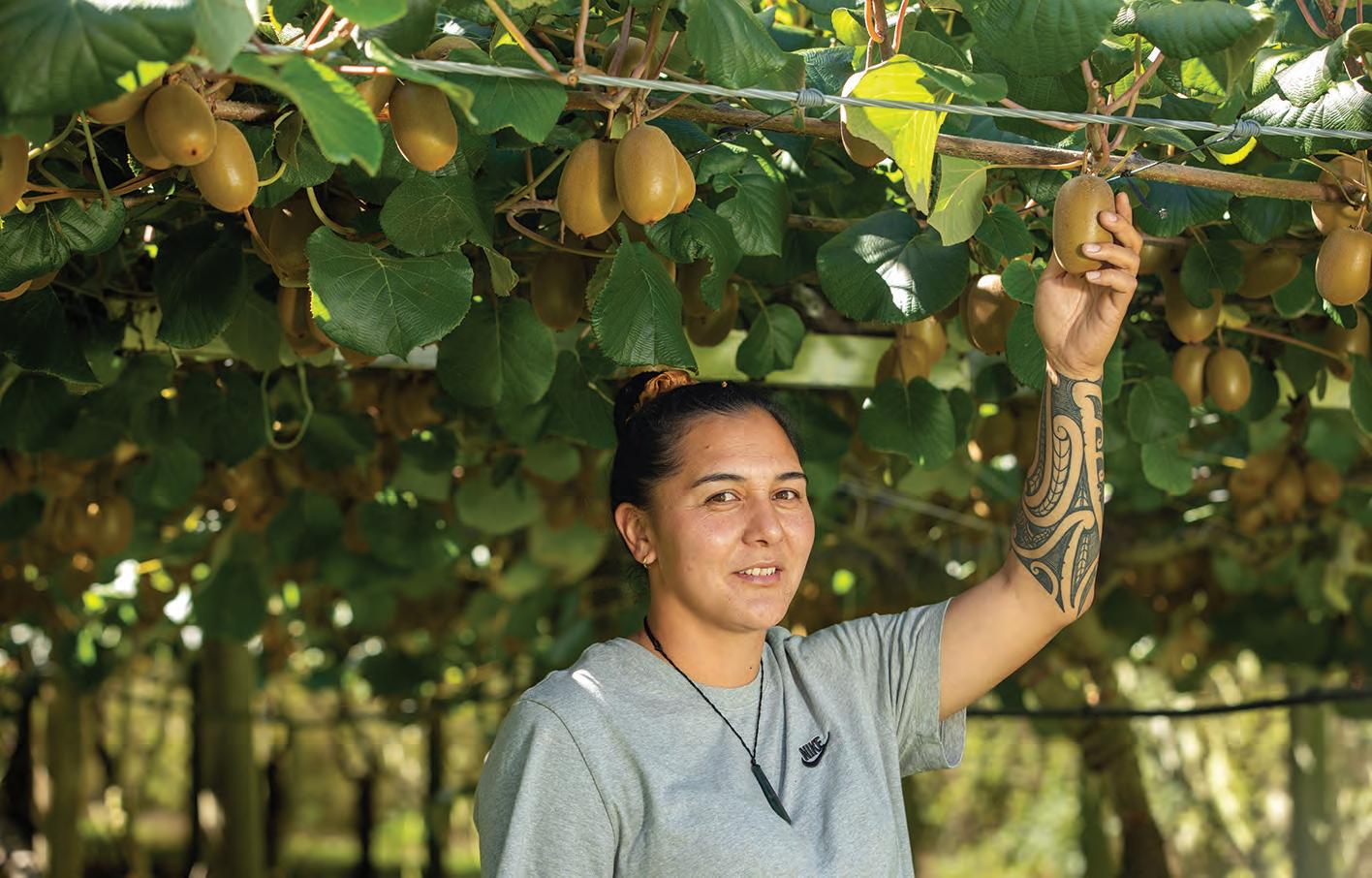 Peter Burke peterb@ruralnews.co.nz
Peter Burke peterb@ruralnews.co.nz
The finalists in the Ahuwhenua Young Māori Grower Award for 2023 have been announced and all are wahine Māori.
They are Alix Te Kere, who’s a health and safety advisor, Rockit Management Services, Hastings, Erica Henare, pipfruit and kiwifruit manager, Kono NZ LP, Motueka and Grace Rehu, a leading hand at Turners and Growers, Puketapu, Hawke’s Bay.
The Ahuwhenua Young Māori Farmer and Grower award was inaugurated in 2012 and is designed to recognise up-and-coming young Māori in the pastoral and horticulture sectors. The three finalists this year were selected from a number of entrants from around the country. This is only the second year the competition for the Young Māori Grower has been held.
Spokesperson for the competition Aaron
Hunt says despite all the challenges that the horticultural sector has faced in recent months, it is amazing to see three very worthy young Māori growers come forward as finalists. He says all of them have demonstrated that they are committed to working in the sector and have fine leadership qualities.

Hunt says horticulture is in the DNA of Māori and they are naturally close to the whenua, both physically and spiritually. He believes it is perhaps why more and more young Māori are choosing career paths in this sector.
“For young Māori, the horticulture industry remains a great career option offering an appealing outdoor lifestyle but the lure of technology and innovation is taking the sector to new levels. The opportunities in this and other areas of the primary sector are limitless.”

The quality of kiwifruit for the coming season is looking good.
That’s the view of the Zespri’s chief executive Dan Mathieson. He told Hort News that while there’s been a slight delay to the start of the picking season, they are seeing a lot of good quality fruit sizes coming through. But he adds that due to last year’s October frost – and to some extent, Cyclone Gabrielle – the 2023 crop with will be lower than last season.
“We think it will be in the order of between 15% and 20%,” he says.
Mathieson says a huge effort is being made to ensure that fruit quality in 2023 is back to where it should be. He says there is an industry wide response plan to the problem to deal with the issue and all those in the supply chain are cooperating fully.

“This relies on growers making sure that the fruit is coming off the vine into bags in the way it should,” he told Hort News
“Our post-harvest sector is managing the quality well through packing process and Zespri ensuring that the fruit gets out to our customers in the best possible condition. Also, the shipping people managing the condition of the fruit on
Mathieson says when he was at a food fair in Germany recently, buyers of NZ kiwifruit raised the issue with him.
He says they told him the quality of fruit last season was not up to the high NZ standard they expected and were seeking assurances that there would be an improvement in 2023. Mathieson says the message from them was that there was enormous growth potential if the quality was up to standard.
“I was able to give them an assurance that it would be and that NZ kiwifruit industry right along the supply chain is working to ensure that this happens.”
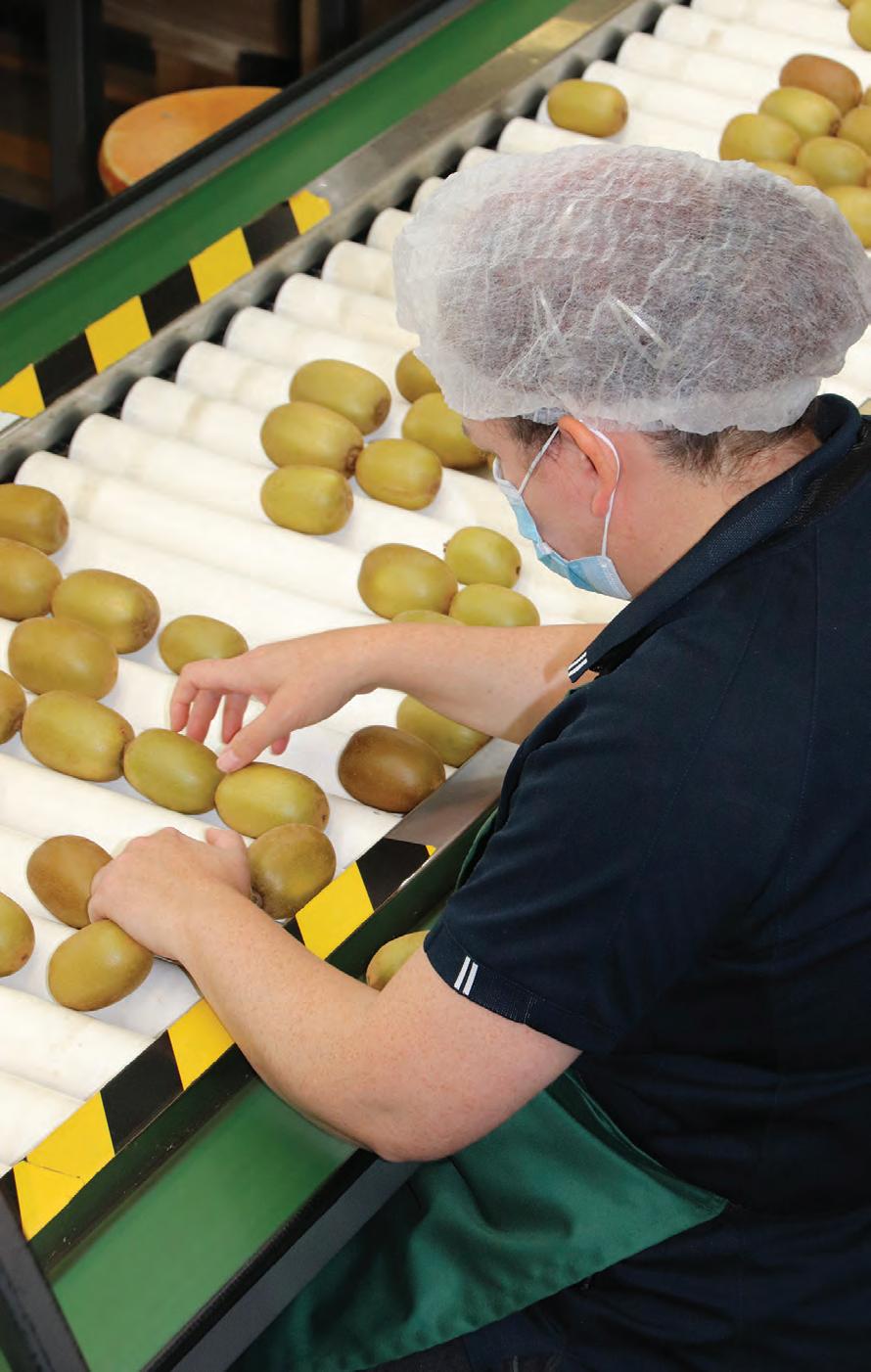
Mathieson says the industry is confident it can improve quality this
our vessels to ensure that when it gets to market, it’s ready to go and ready to eat state,” he adds.
Last season, poor quality fruit cost the kiwifruit sector about $500 million dollars. But worse still, it caused considerable adverse reaction from buyers of our fruit and Zespri was a put on a warning to sort the quality issue out pronto.
Mathieson says Zespri’s research shows that one of the main reasons for the drop in quality was the shortage of people to pick the fruit, remembering this took place in the middle of a major Covid outbreak compounded by a lack of overseas workers. He says the industry at the time was short of about 7000 workers and those picking the fruit were under pressure.
“So, we saw a lot of damage coming from picking. A lot of that fruit was going into the bins too quickly, that was creating bruising and physical damage and that was taking a about five weeks to show through,” he explains.

“Then we started to find that in-market, and we were having to repack a lot of that fruit. As we got into the season, we started to realise the scale of the problem and we began repacking fruit in our packhouses here before it left for market.”
year and points to several factors that will drive this. He says for start there are more people, including backpackers available to pick the fruit so it won’t be a hurried pick as was the case last year. He says the pickers are better trained and growers themselves and others along the supply chain will be closely monitoring how the fruit is handled to ensure it’s not damaged.
He adds that they will be paying close attention right through to the market on the issue of fruit handling.
“We know if we can get the quality issue resolved there is so much opportunity for us to sell at great value around the world and at the top end of the market.”
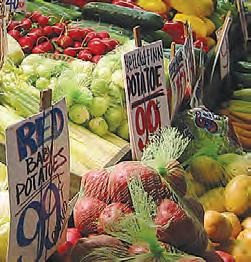
UNITED FRESH New Zealand wants to encourage more women to join the fresh produce industry and highlight their vital role in New Zealand’s $6 billion horticulture industry.
General manager Paula Dudley says United Fresh takes pride in supporting the value chain, which supplies fresh fruit and vegetables to people throughout NZ.
She adds that their award-winning femaleled team echoes an international movement towards gender equality.
“The United Nation’s Sustainable Development Goals include the empowerment of women in the workplace. Studies in NZ have found that women represent 50% of workers in the industry, yet they hold less than 20% of leadership positions. That’s a statistic United Fresh is keen to change.”
A significant part of United Fresh’s work is promoting the 5+ A Day message to Kiwi consumers as well as managing the Fruit In Schools initiative, which will this year deliver over 27 million servings of fruit to 110,000 children around the country.
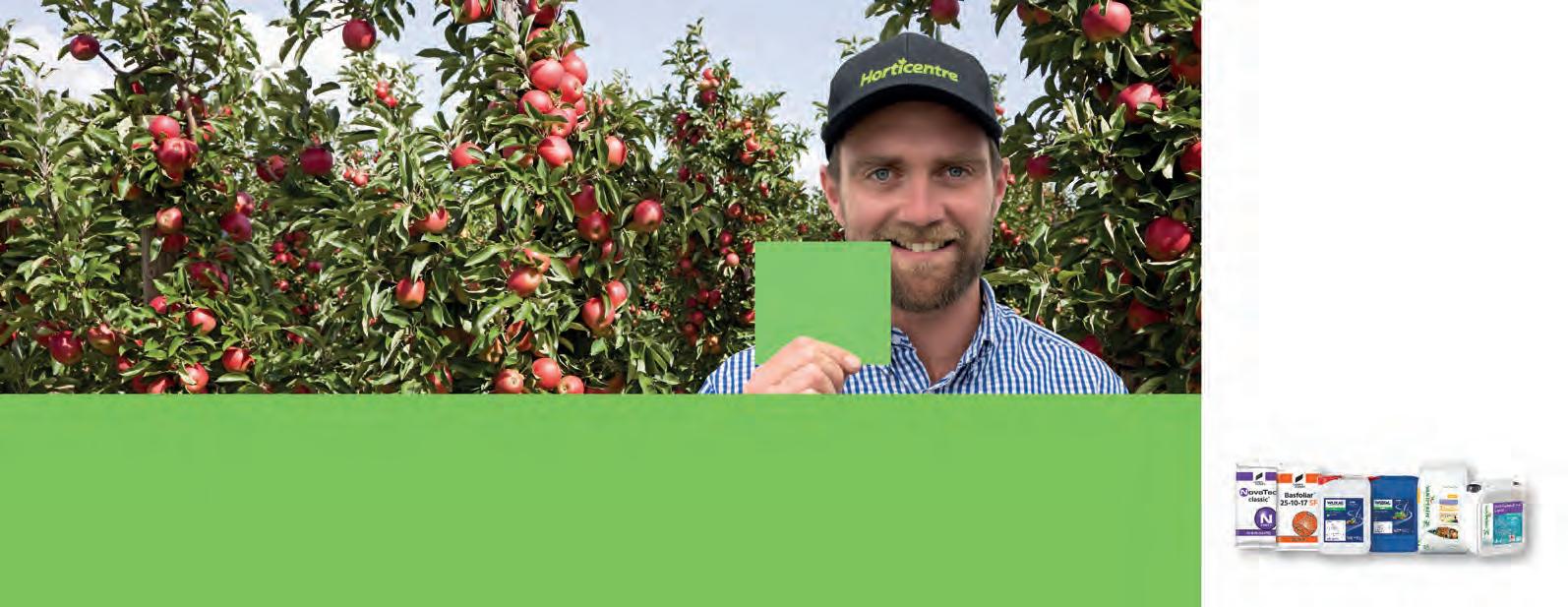
5+ A Day Charitable Trust Project manager Carmel Ireland says the importance of women to the fresh produce industry can’t be underestimated.
“Just from a retail perspective, women are still the primary decisionmakers when it comes to the nutrition choices that family make,” she says.
“It’s vital that women within the industry take leading roles to ensure that we’re meeting the needs of those consumers to put fresh, affordable and healthy food on the
Covid-19 lockdowns when hospitality, schools and independent retailers were shut down, within two weeks the United Fresh team rerouted produce that otherwise would have gone to waste to needy families. Adding up to 300,000 boxes of fruit and veg –and a Primary Industries NZ Summit Team Award
the abilities that women bring to the fresh produce industry.
“[We’d] set up projects of this size before, but not under such extreme circumstances.
“Only the years of teamwork within our small group and alongside our members enabled us to respond so quickly. Women often have a
whānau and this drives us to develop solutions to deliver essential nutrition to New Zealanders.”
5+ A Day media manager Katie Fegan says the ways in which women contribute to horticulture has changed over the years.
“While primary industries like horticulture may seem


unlike corporate workplaces women have always played an important part in the growing and harvesting of fruit and vegetables,” she says.
“As the industry grows, so do roles for females, with limitless opportunities now available to young women entering the industry.”
her team of women at United Fresh should be replicated throughout the horticulture industry.
“As our industry grapples with environmental, financial and social change, women offer a fresh perspective in an industry that is vital for the health and wellbeing of all New Zealanders.”

CYCLONE GABRIELLE has had a major impact on the country’s forecast apple harvest for the coming season.
Apple and Pears NZ has reestimated the nation’s pipfruit crop after Cyclone Gabrielle cut a swathe through many parts of the East Coast of the North Island’s pipfruit growing region.
Apple and Pears NZ chair Richard Punter says the overall New Zealand crop is estimated to be down 21% on the original January crop estimate – resulting in a volume of 16.1 million TCEs (tray carton equivalent). This does not include the Tairāwhiti Gisborne crop reestimates, which are yet to be completed.
Punter says both Central Otago and Nelson/Tasman have experienced good growing and harvest conditions and are on track to meet forecast crop expectations.
However, Punter warns that
on the East Coast, there is a clear distinction between blocks that have been significantly and severely affected by the storm, and blocks that are untouched.
“For unaffected blocks, the remaining crop harvest is well underway, and conditions for the remaining harvest period look good,” he says.
“However, as a result of the storm, the Hawke’s Bay pipfruit crop is down by 33%. This represents a reduction of 4.3 million TCEs in the Hawke’s Bay region.”
Punter says these estimated crop reductions are across the range of varieties grown in the region.
“While the overall New Zealand crop is down, exporters will provide a premium product to the market by ensuring only the best quality apples and pears are placed in the carton, as they do every year,” Punter concludes. Apple


CLAIMS ARE being made that the minimum wage increase that came into effect this month will cut into the New Zealand horticultural industry’s already tight margins.

It will also put increased financial pressure on a sector decimated by bad weather, not least the floods –some small growers could go under as a result.
From April 1, the adult minimum wage across New Zealand rose to $22.70 per hour. The training and starting wage rates increased from $16.96 to $18.16.
“We’re not say don’t pay fair wages for a fair day’s work—pickers should be suitably compensated for their labours,” Dataphyll chief executive Christoph Kistler says.
“But this minimum wage increase will hurt not just small grow-




ers, but ultimately it will hit the consumer in the pocket and deprive Pasifika of employment opportunities.”
New Zealand orchard management company Dataphyll is a Kiwi tech start-up that uses radiofrequency identification (RFID) technology. It aims to create an efficient harvest system that helps growers improve productivity, fruit quality, meet compliance obligations and measure picker performance down to the last berry.
In February, the Government announced its Growing Together 2035:
Aotearoa Horticulture Action Plan Strategy, which included a goal for horticulture production to reach $12 billion by 2035. Agriculture Minister Damien O’Connor said that in 2023 the horticulture sector is expected to clock in at $7.1 billion.
However, Kistler believes the new minimum wage increases will make the Government’s goal more challenging for the horticulture sector. He says this is because more of its revenue will be funnelled into wages rather than being rein-
vested into expanding the industry to reach those targets.

“With all the additional costs horticulture businesses have this year, with the supply chain and the follow-on consequences of Cyclone Gabrielle and other weather
events, this policy change puts more pressure on small growers especially,” he explains.

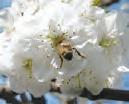

“These sorts of artificial input cost increases won’t stop in the horticulture sector. They tend to have ripple effects across the economy as prices
for goods rise in lockstep with the wage rises, cancelling any positive effect the policy might have had on people’s take-home pay.”
Kistler says that even before the policy change, wages often constituted 60% or more of a grower’s costs in a sector with slim margins. He believes the wage rises could put some small growers into more debt—or push them out of the market entirely as they struggle in a competitive marketplace.
He adds that growers also employ seasonal workers from the Pacific Islands, many of whom are paid the minimum wage as the job of picking produce is relatively manual. He claims the new minimum wage increases will significantly impact growers’ ability to hire seasonal workers.
Kistler says growers use various systems to
pay their workers, including by the kilogram, hourly rates and bucket rate. The bucket rate is common but open to disputes as it is easily manipulated. Hourly is the most straightforward system to manage but rarely used. Per kilogram is a favourite of growers.
However, the bucket rate system is easily manipulated, and growers who use it frequently overpay their workers. Also, manually entering pick rates leads to errors and pay disputes.
“Growers that pay by bucket or hourly are affected by the minimum wage increases as the pay rate must be adjusted when the worker’s pick rate compensation may fall below what they would have earned on an hourly wage,” Kistler concludes.
TEACHERS FROM around the Auckland, Waikato, Hauraki Plains and Coromandel areas recently got a chance to really know their onions on a midMarch Teachers’ Day Out.
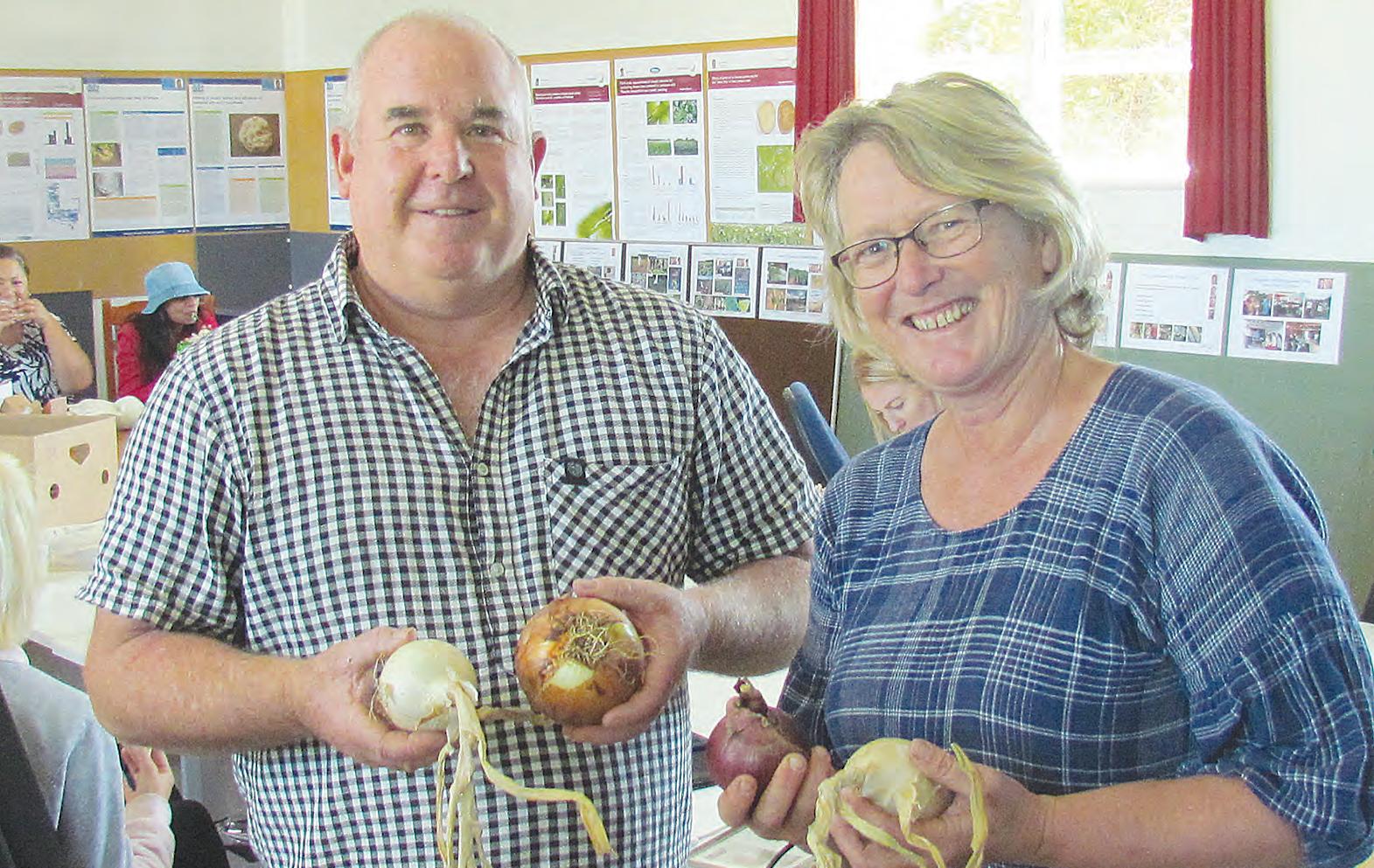
As well as visits to a dairy farm and vegetable grower, A S Wilcox, the 20 participants heard from Allium Solutions’ manager Grant Ryan, about the importance of the onion industry to export returns – as well as the wide range of career prospects it could offer.
The trip was the first of five to be held this year after disruptions due to Covid, with other trips organised in the Wairarapa, Cromwell, the West Coast and Blenheim.




Ryan gave the teachers an insight into the world of onion breeding, which he says isn’t a precise science with most pollination carried out by flies. As it takes from 12 to 14 years to move from research to commercialisation of new onion varieties, “you have to know what the markets are doing”.
While Indonesia favoured the smallest sized onions, those slightly larger at 50-60mm, were most popular in European mar-
and with the United States had led the way in breeding sweeter, less pungent onions.
Work was going on developing red onions with more health-giving antioxidants, as well as a candy-striped onion with alternating rings of red and white flesh.
While they’re not as sexy as kiwifruit or apples, onions are New Zealand’s third largest horticultural export crop and – after tomatoes –
NZ produces around 185,000 tonnes every year on 5,500 hectares, which equates to just two days worth of global consumption. The Chinese, for example, each eat an average of 160kg of onions a year while New Zealanders only manage to consume between 30-40kg.
Inbreeding depression means onions require outcrossing and genetic drift where their shape can vary markedly, can be
it was challenging to try to breed disease resistance.
“We’re working with pathologists and entomologists to develop tolerance,” Ryan says. “But we need a lot more younger people coming into the industry to support us. We’re not good at engagement with students because we’re too busy doing other things.”
Ryan acknowledged there were mundane tasks, which needed to be
weighing them and looking at a comparison of yield advantages. But he had travelled the world in his role and appreciated working outside rather than in a laboratory. And horticulture still had room for small scale growers who had the advantage of being able to be more innovative than larger growers with whom they could collaborate.
Kerry Allen, the agricultural and horticultural science curriculum direc-
Pukekohe trip. He is also secretary-treasurer of the Horticulture Teachers’ Association (HATA) and a member of the Sow the Seed agricultural and horticultural science advisory team set up by the Ministry for Primary Industries (MPI) and Ministry of Education four years ago. HATA, which has 189 school members, has been carrying out the trips for the last 12 years, connecting teachers and careers advisers with indi-
growers to back up what they are being taught in the classroom and interest them in a future career.
“We can talk until we’re blue in the face but by making these visits they understand more about what we mean,” she told Hort News. “They get engaged.”
Growers also gained a point of contact if they wanted to employ students for work experience, seasonal work or permanent positions.
Bronwyn Dyer, who teaches Primary Industries and Horticulture at Hauraki Plains College at Ngatea, says the trips are “incredibly invaluable”. They gave real life and up to date information which could help to correct students’ sometimes narrow understanding of the agriculture and horticulture industries and open their eyes to the wide range of sci-
“We can talk until we’re blue in the face but by making these visits they understand more about what we mean.”
NEW ZEALAND grown are jam packed with components essential to human health, according to new research.
Work done at the Riddet Institute, at Palmerston North’s Massey University, has shown that cherries can join the ranks of blueberries and other colourful fruits grown in New Zealand with their impressive antioxidant and vitamin profile.

The research into New Zealand cherries was jointly funded by a grant from the HighValue Nutrition National Science Challenge to Cherri Health and Manufacturing (CH&M) and the Bioresource Processing Alliance with Cherri Global.
The research was carried out by the scientists at the Riddet Institute and Plant & Food Research over the course of several months late last year.
Riddet Institute lead scientist Dr Ali Rashidinejad says this study is the first of its kind to systematically analyse the nutritional and bioactive (phytochemical) compositions of the main cherry varieties grown in New Zealand. Earlier research has focused on cherries grown overseas.
The Riddet Institute
is a Centre of Research Excellence (CoRE), hosted by Massey University, which focuses on fundamental and advanced food research.
Cherri Global, based in Hawke’s Bay, has a business division focused on developing a range of Cherry products focused
on health and eliminating waste.
Rashidinejad says cherries contain numerous nutrients such as vitamins A, E, K, C and B, carotenoids, lutein, and zeaxanthin. Cherries have been recognised for providing significant health benefits such as
decreasing markers for oxidative stress, inflammation, exercise-induced muscle soreness and loss of strength. They are also thought to improve blood pressure, arthritis, and sleep.
Rashidinejad says there are 17 main varieties grown in New Zea-
land. This study focused on six top-selling varieties grown in Cherri Global orchards in Otago: Bing, Rainier, Kordia, Lapins, Sweetheart, and Staccato.
The study also compared fresh and packaged cherries to learn if nutrients were lost during processing.
Researchers looked at proteins, carbohydrates, sugars, fats, fibre, fat-soluble vitamins, and watersoluble vitamins.
“Basically, in terms of nutrient profiles, we have explored everything we could. And the same with the bioactive compounds,” Rashidinejad explains.
“We concluded that all six varieties were rich sources of different nutrients: minerals, vitamins, amino acids, and phenolic compounds – the antioxidants.
These latter compounds, the phenolic compounds, were what most interested us because they are potent antioxidants with numerous scientifically proven health-promoting properties.”
Rashidinejad says almost 30 phenolic compounds were studied, in collaboration with Plant & Food Research, using high pressure liquid chromatography techniques.
THE CHERRY season is quite short, with early varieties ripening in late December and all finished by early February.
The delicate stone fruit are not easy to grow, requiring extensive bird protection, and cherries are labour intensive to pick and process.
After picking, cherries are washed at pack houses and exported or distributed around the country, either as fresh or frozen product. The comparison between fresh and packaged fruit found processing had varying effects on the nutrients and bioactive compounds of the fruit.
“We found only some minor differences and little effect from the time and the process of washing, drying and packing,” Rashidinejad adds. “It’s good news that the transport and packing does not have a major effect on the health-promoting compounds.”
He believes the findings were exciting for the future opportunities that could be explored.
“This has been a comprehensive study. The hypotheses have been confirmed that New Zealand cherries are a great source of antioxidants and nutrients, and that the processing has a little or no impact on their nutritional properties.”
He says future steps would be finding ways to use the waste products produced during cherry processing. It has been estimated that 8000 tonnes of cherry waste are produced in New Zealand every year.
Because washing and packaging does not significantly reduce the nutrient profile of the fruit, this could lead to new uses for the waste or the seconds that don’t get to shop shelves. Such waste from cherries could be converted into a high-value ingredient for the food industry in the future. This could be in powdered or frozen form, or as a component in another food product.
WATERLOGGING IN soil occurs when the root zone becomes saturated, and the air between the soil particles is replaced with water.
This can result from heavy localised rains, flood waters slowly flowing across the landscape, a rising water table or a combination of all three. The persistence of the waterlogging is influenced by local topography and drainage properties of the soil.
Compacted soils and soils with shallow impermeable layers are particularly prone to waterlogging. Compaction is generally more of an issue in soils with high clay content, especially soils with a high sodiumto-calcium ratio.
Waterlogging may continue even after surface water has dissipated, particularly in clay soils and soils with a shallow impermeable layer below the soil surface. Digging a hole or installing a test well can help monitor the water table and the degree of waterlogging.

Soils should not be driven on or cultivated while the soil is very wet, as that will result in compaction. Only work the soil once the excess water has drained away, but take care as cultivation has the potential to pulverise the soil and create further damage to soil structure.
Waterlogging is known to increase the impact of soil salinity.
Salts in the subsoil can move up the profile into surface soils and the root zone area through rising water tables and flooding, becoming highly concentrated and causing damage to roots, especially as the soil dries out. In addition, when a lack of oxygen impairs root function, plants have difficulty keeping sodium and chloride out of the roots, and they end up accumulating more salt than usual.
A gypsum (calcium sulphate) application to the soil can assist with displacing sodium from the soil profile and, as a result, improve the soil’s structural stability.
Waterlogged soil restricts gas diffusion in and out of the soil, leading to the depletion of soil oxygen levels and an accumulation of carbon dioxide. The anaerobic conditions created by waterlogging increases loss of soil nitrate as nitrogen gas which is then lost from the soil.
Nitrogen, potassium and boron are also lost from waterlogged soils through leaching in waterlogged soils.
In addition, nutrients such as nitrogen, phosphorus and calcium can have their uptake inhibited, and waterlogging can also cause changes in soil pH, affecting some nutrients’ availability.
In the right conditions, an agricultural lime application may be considered if soil pH needs to be corrected.

Adding gypsum (calcium sulphate) to the soil can assist with improving gas exchange in the soil. The calcium in gypsum will increase the activity of soil microorganisms and earthworms, which aids in soil aeration and macropore formation.
The advantages of gypsum application include increasing the calcium: sodium ratio in soil, especially in dispersive soils (which are structurally unstable in water due to their chemistry). In addition, gypsum assists with greater stability of soil organic matter and more stable soil aggregates, improved water penetration into the soil and more rapid seed emergence.
Talk to your local fertiliser advisor for advice on application rates based on a recent soil lab test result.
Compacted soils and soils with shallow impermeable layers are particularly prone to waterlogging.
The South Island Agricultural Field Days (SIAFD) gave the Landpower Vegetable Centre, a specialist division of the Claas Harvest Centres, the chance to show of it extensive product range – centred around the vegetable cultivation, planting and harvesting sector.
In the case of the latter, front and centre was taken up by the Grimme Varitron 270 Terratrac harvester, an impressive piece of heavy metal tipping the scales at 28 tonnes, with the ability to carry a further 7 tonnes of harvested crop.
The machine on show was set up to harvest six rows of carrots grown in 1.8 metre beds. Equipped up front with a Crowner unit that features ground following gauge wheels, 3D adaptability and electronic control to remove the
crown and around 25mm of soil, before the crop starts its journey along the 13 metre machine.
Destined for a juicing plant in Timaru, after topping, the crop is “lifted” onto the intake web by the terradisc assembly. Using hydraulically driven disc coulters, that feature infinite depth control. That intake web features a large square section profile, with the main task of removing as much dirt as possible without losing any crop.
The crop moves to the multi-stage cleaning section of the machine.
“This is the only Varitron in the world of this configuration,” explained product specialist Nigel Prattley.

“With a 900mm cleaning extension to improve crop cleanliness, that ensures that the harvested crop needs very little on-farm cleaning before it is sent for processing.”
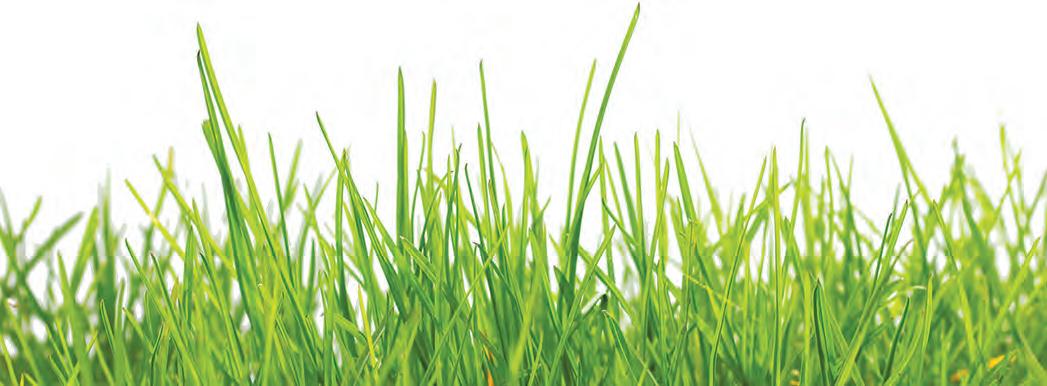
After the initial cleaning process, the crop moves to the rear separator to remove any ‘fines’ before it moves to the top of the harvester to a 7 tonne capacity bunker.
Typically, the machine works in non-stop mode, unloading directly to trucks or tractors hauling bulker trailers. That
process is achieved via a wide discharge elevator on the machine’s offside, with the chassis featuring a 1050 section tyre that can be hydraulically offset by up to 550mm to create a safe and stable platform.
Elsewhere around the machine, impressive stats include a straightsix engine of 360hp,
quadruple hydraulic pumps to power the multiple elements and a large cooling package. This is all accessed via wide opening hatches along the offside of the machine.
Up top, the Ergo Drive cabin, supplied by harvesting specialist Claas, gives the operator a panoramic view of the
harvesting operation. This allows fingertip adjustment of the multiple elements, without the need for any further on-board staff, aided by 13 monitoring cameras.
In addition, the machine’s impressive bulk is complemented by a single Claas TerraTrac unit under the nearside, with a 1.6 square metre footprint, to ensure the total weight is spread over a larger area to improve ground pressure, alongside improving traction and safety in difficult conditions.
Interestingly, restaurant-style baby carrots won’t be at home with this Goliath.
Much like the machine, carrots for juicing are very much plus-sized, favoured for their high juice content.
“Despite their size and the appearance of a thick core, these carrots are high in sugar content, meaning they are juicy,” explains Prattley. “So, once cooked and mashed with some butter, they are a delight to eat.”
